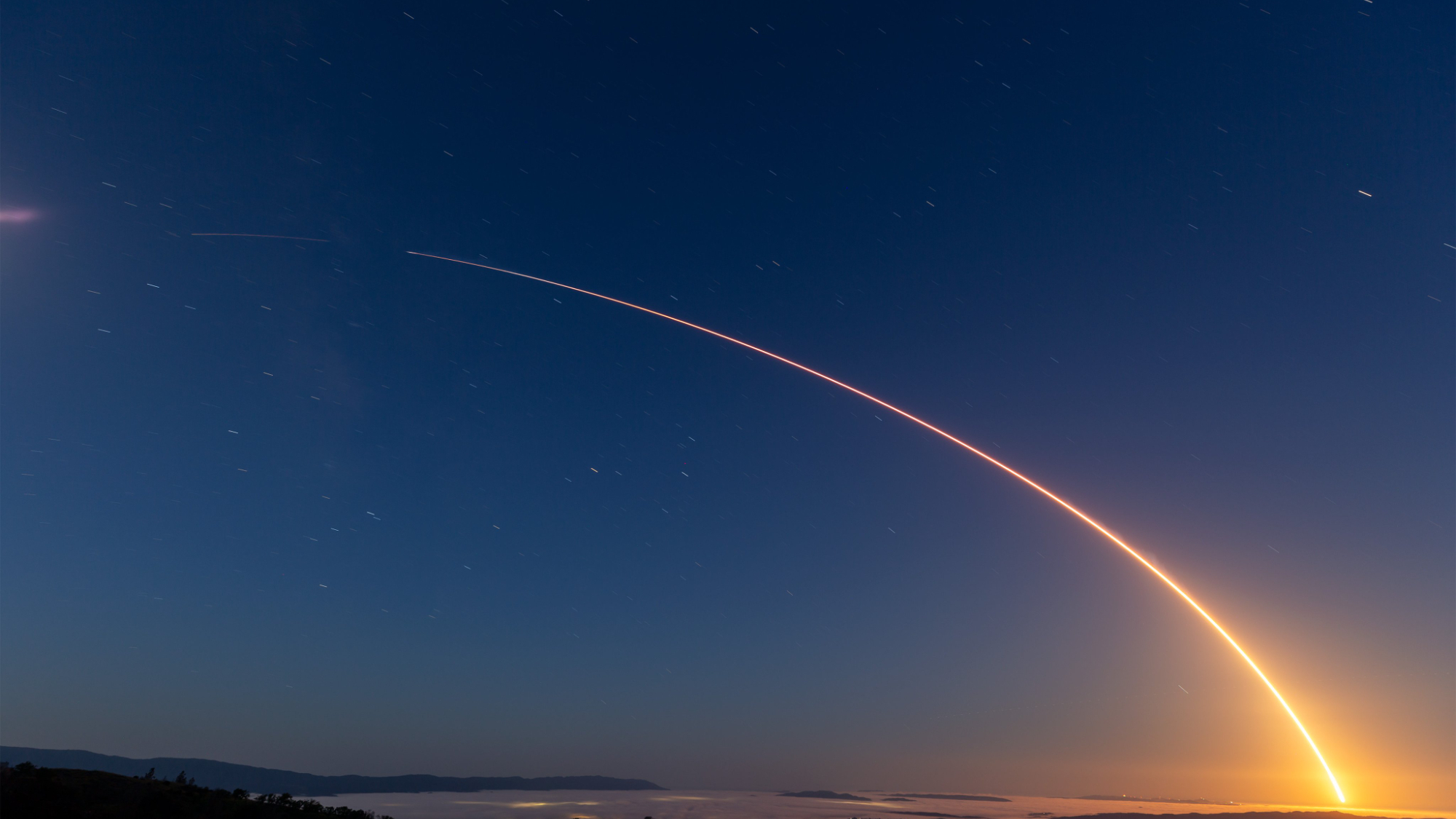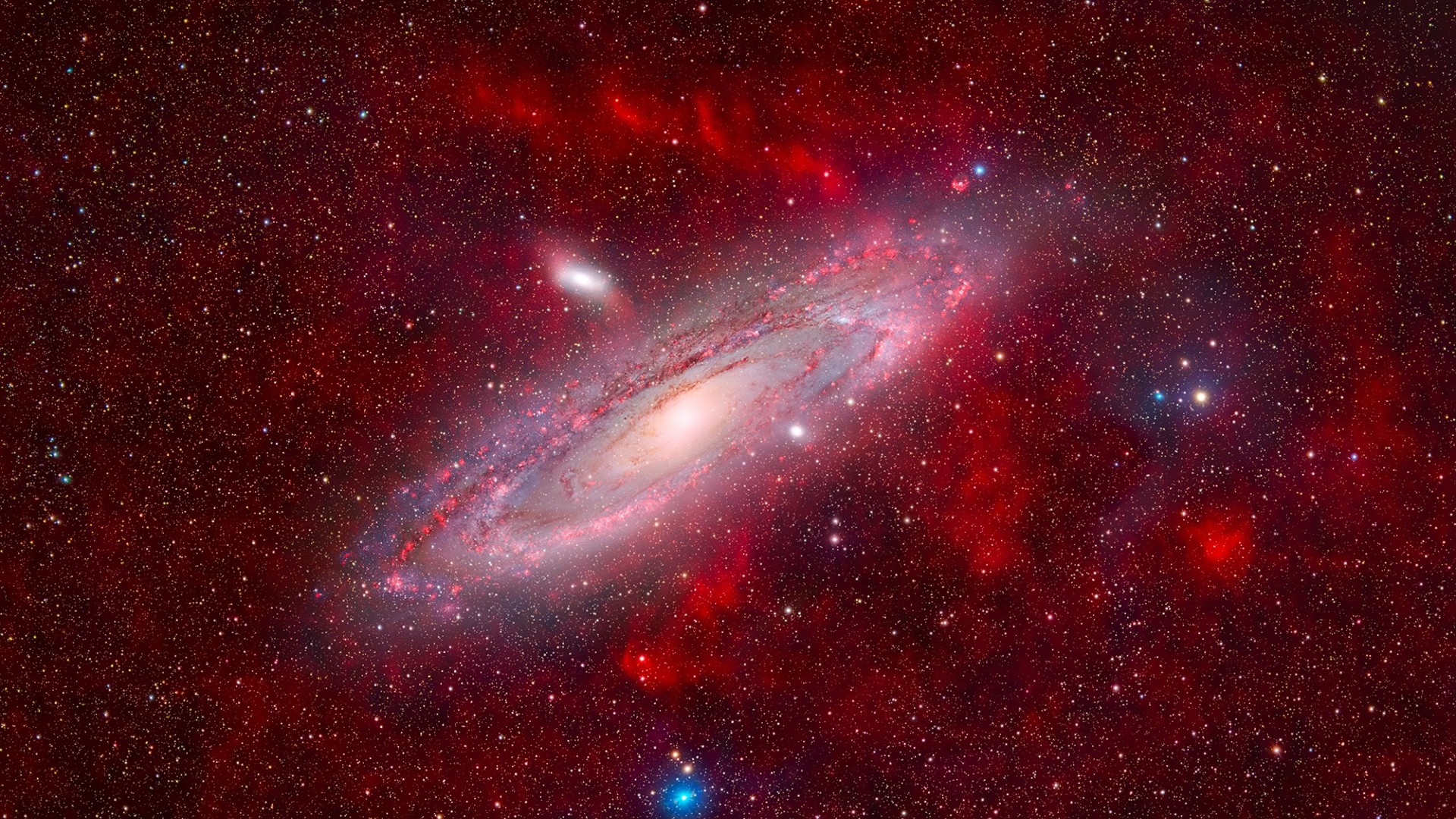Powerful GOES-U weather satellite cleared for launch today on SpaceX Falcon Heavy rocket
NOAA's next-gen weather satellite is set to lift off this afternoon (June 25), weather permitting.
Update for 4:35 p.m. EDT: Mission managers have decided to push launch time to 5:26 p.m. EDT (2126 GMT) in order to increase chances of favorable weather.
CAPE CANAVERAL, Florida — The green lights continue to shine leading up to the launch of a powerful U.S. weather satellite.
GOES-U, the fourth and final member of the U.S. National Oceanic and Atmospheric Administration's (NOAA) GOES-R series of next-gen weather satellites, has been cleared for its planned Tuesday (June 25) liftoff following an in-depth readiness review on Monday (June 24).
The two-hour launch window for GOES-U opens at 5:26 p.m. EDT (2126 GMT) on Tuesday. The spacecraft will catch a ride on a SpaceX Falcon Heavy rocket from Launch Complex 39A at NASA's Kennedy Space Center here on the Space Coast, weather permitting. This will be the Falcon Heavy's 10th launch overall, and the 65th orbital liftoff of 2024 for SpaceX. You can watch the launch live in the window above and on Space.com's homepage, courtesy of NASA. Coverage will begin no earlier than 3 p.m. EDT (1900 GMT).
Late on Monday afternoon (June 24), members of the mission and launch operation teams briefed the media about the final checklist items for Tuesday's launch.
"The GOES-U spacecraft is ready, the launch vehicle is ready, and we're looking forward to getting the spacecraft in orbit," Denton Gibson, senior mission manager in NASA's Launch Services Program, said during a press briefing on Monday.
Getting everything ready required some work. For example, on Sunday night (June 23), while preparing for Monday's rollout of GOES-U and the Falcon Heavy to the pad, the launch team discovered an issue with the transport air conditioning (AC) system.
Get the Space.com Newsletter
Breaking space news, the latest updates on rocket launches, skywatching events and more!
"The system has redundant parallel systems in it, and one of those legs was not operating," Julianna Schiman, the director for NASA science missions at SpaceX, said at Monday's briefing. "We decided to keep the vehicle safe and make sure that that transport AC unit was fully functional. Now, that transport unit is fully functional and provides very cold air."
But this is Florida. So, even though all systems are "go," a big question remains: Will Mother Nature cooperate?
"We're going to go with a 70% probability of violation, or a 30% chance of 'go' for all the weather rules that we evaluate," Brian Cizek, launch weather officer with the U.S. Space Force's 45th Weather Squadron, said during Monday's briefing.

There's a set of 10 weather rules, or criteria, that have to be met for the launch to go forward. In typical Florida fashion, there are concerns that afternoon thunderstorms could materialize, or clouds could build up that would lead to the Falcon Heavy creating its own lightning during the launch. That would be a dangerous condition.
"What's interesting is that a rocket can actually trigger a lightning strike that would not have [otherwise] occurred," Cizek told Space.com. "Certain types of clouds at certain levels of the atmosphere can actually hold a charge that's not strong enough for a natural strike but could trigger a lightning strike. So that's what those rules are designed to protect against."
The two-hour launch window will give the team a real chance to get off the ground, however.
"Even if you're violating in one part of the window, we can shift things as weather looks better," Cizek said. "So, if it's looking worse at the beginning of the window, we can shift toward the middle or the end of the window if we see the storms starting to die off. I think there will be an opportunity, and we will be working closely with our launch weather team."
Like its satellite siblings, GOES-U will have a wealth of scientific bells and whistles. The new spacecraft's instruments will provide state-of-the-art advanced imagery. It will also study Earth's weather, oceans and environment in detail, including conducting real-time mapping of lightning activity. GOES-U's scientific gear features updates and improvements over the instruments of its predecessors, and it carries a brand-new compact coronagraph tool to help with space weather forecasts.
You can watch the launch live here at Space.com, courtesy of NASA. Coverage will begin no earlier than 3 p.m. EDT (1900 GMT).
The successor to NOAA's GOES-R series will be the Geostationary Extended Observations (GeoXO) satellite system, planned to launch in the early 2030s.
Join our Space Forums to keep talking space on the latest missions, night sky and more! And if you have a news tip, correction or comment, let us know at: community@space.com.

Meredith is a regional Murrow award-winning Certified Broadcast Meteorologist and science/space correspondent. She most recently was a Freelance Meteorologist for NY 1 in New York City & the 19 First Alert Weather Team in Cleveland. A self-described "Rocket Girl," Meredith's personal and professional work has drawn recognition over the last decade, including the inaugural Valparaiso University Alumni Association First Decade Achievement Award, two special reports in News 12's Climate Special "Saving Our Shores" that won a Regional Edward R. Murrow Award, multiple Fair Media Council Folio & Press Club of Long Island awards for meteorology & reporting, and a Long Island Business News & NYC TV Week "40 Under 40" Award.









